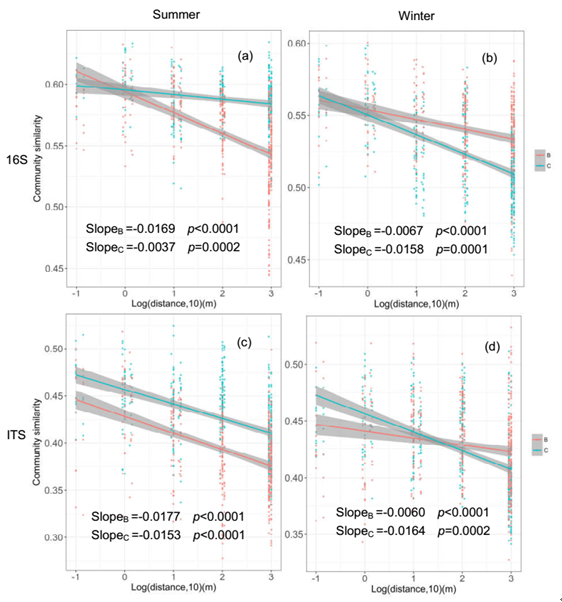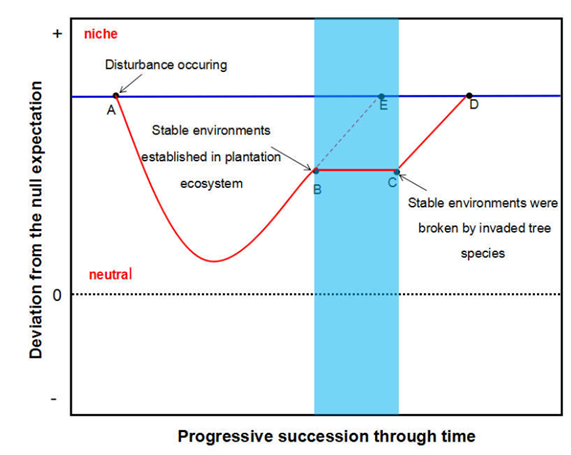Natural forests have been widely converted to meet other land needs such as plantation, agriculture and pasture, and the loss of natural forest is estimated to be 130 million hectares between 2000 and 2010. This land-use change caused the loss of microbial β-diversity, which would lead to biotic homogenization of microbial communities, altered ecosystem functions and reduced ecosystem resilience to global change. Thus, evaluating the effects of land-use change on microbial diversity need to be urgently resolved.
Recently, most studies just focused on effects of tropical forests converted to agricultural land, and these conclusion are exclusive.
More importantly, temporal shifts in soil microbial β-diversity, particular the effects of land-use change, remain unclear.
Therefore, an improved understanding of the temporal variability in microbial β-diversity driven by land-use change and the related mechanisms would help us predict the temporal dependence of microbial responses to disturbance.
Prof. Wang Qingkui's lab from the Institute of Applied Ecology of the Chinese Academy of Sciences, therefore, selected broadleaved and coniferous forests in Huitong Experimental Station of Forest Ecology to investigate the effect of native broadleaved forest to coniferous plantation conversion on soil microbial β-diversity.
They found seasonal variations in microbial β-diversity induced by forest conversion, showing higher bacterial and fungal β-diversity in broadleaved forest in summer but higher bacterial and fungal β-diversity in coniferous forest in winter.
While, forest conversion induced greatly increases in stochastic processes in both bacterial and fungal community assemblies regardless of seasons.
Moreover, integrating previous frameworks with beta-null model results, they proposed a conceptual model to link microbial secondary succession to stochastic/deterministic shifts in forest ecosystems.
Their results highlight the importance of spatiotemporal scales to assess the influence of land-use change on microbial β-diversity.
The results were published entitled "Forest conversion induces seasonal variation in microbial β-diversity" in Environmental Microbiology.
The work was supported by Strategic Priority Research Program of the Chinese Academy of Sciences, National key R & D projects in China, the National Natural Science Foundation of China.

Fig. 1 Distance-decay curves of microbial community similarity in different seasons. "a","b" and "c","d" indicate distance-decay curves of bacterial and fungal community, respectively. Geographic distance was processed as a logarithm (Image by LIU Shengen).

Fig. 2 The relative changes in deterministic and stochastic processes assessed using deviations from beta-null models based on Unweight-Unifrac metric. “B” and “C” indicate the broad-leaved forest and coniferous plantation respectively. “(a)” and “(b)” indicate the results of beta-null modeling for bacterial community and fungal community assembly respectively (Image by LIU Shengen).

Fig. 3 Hypothesized conceptual model linking microbial secondary succession to the stochastic/deterministic shifts in forest ecosystems (Image by LIU Shengen).